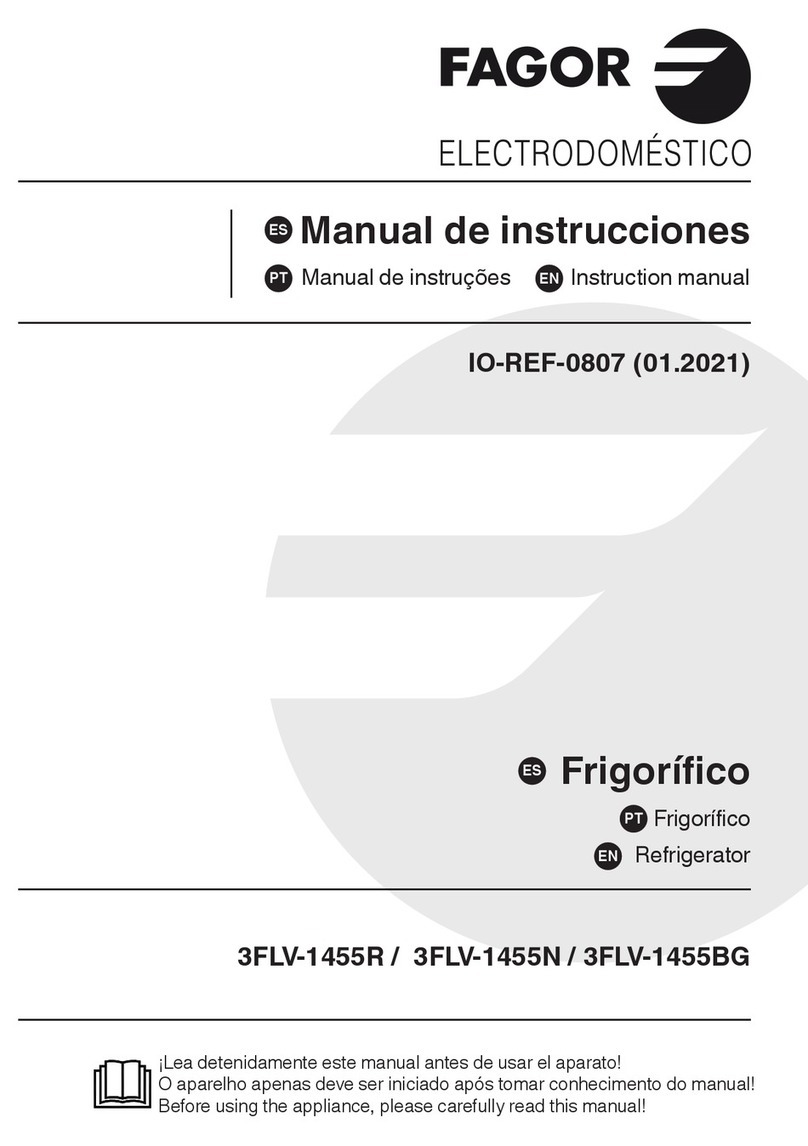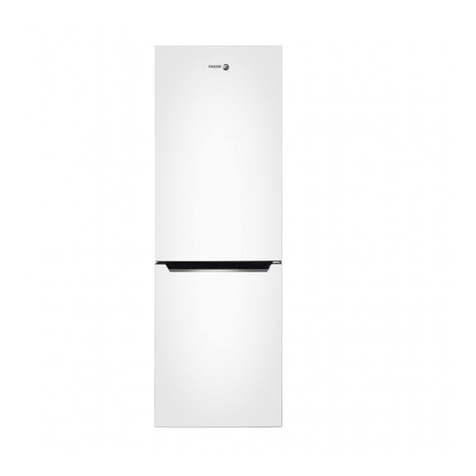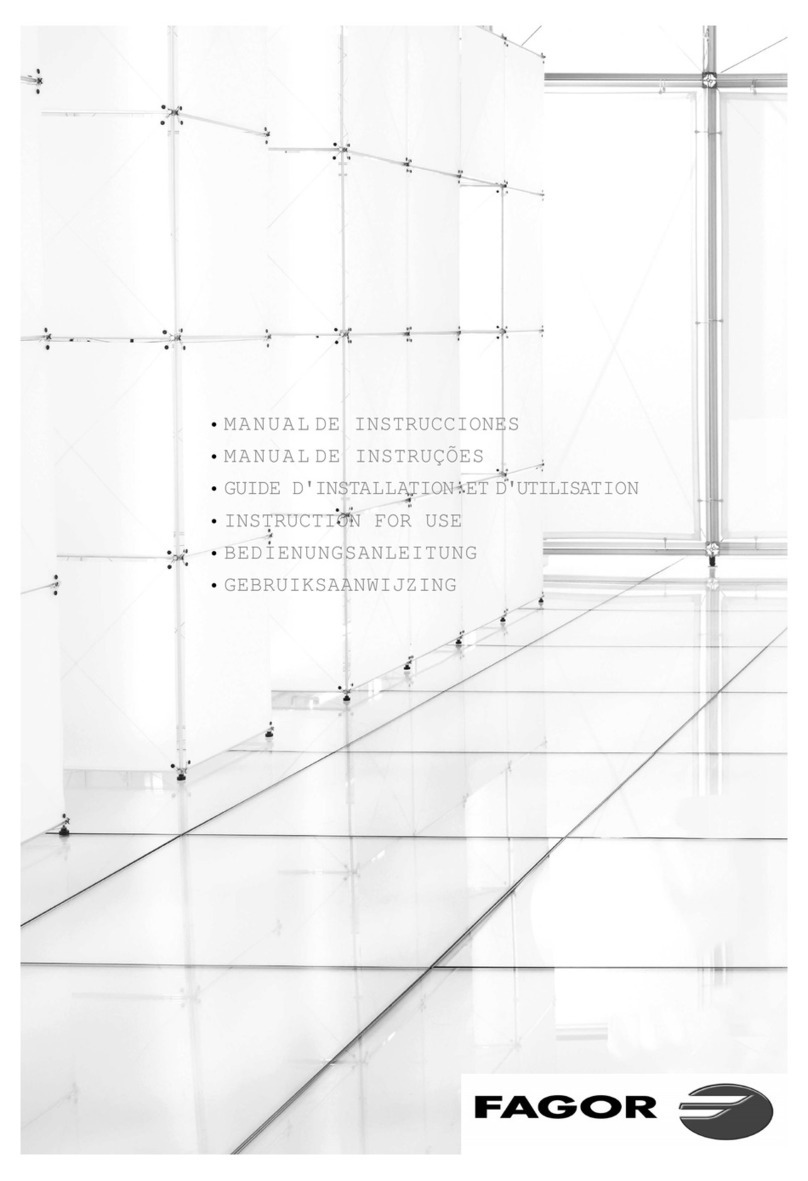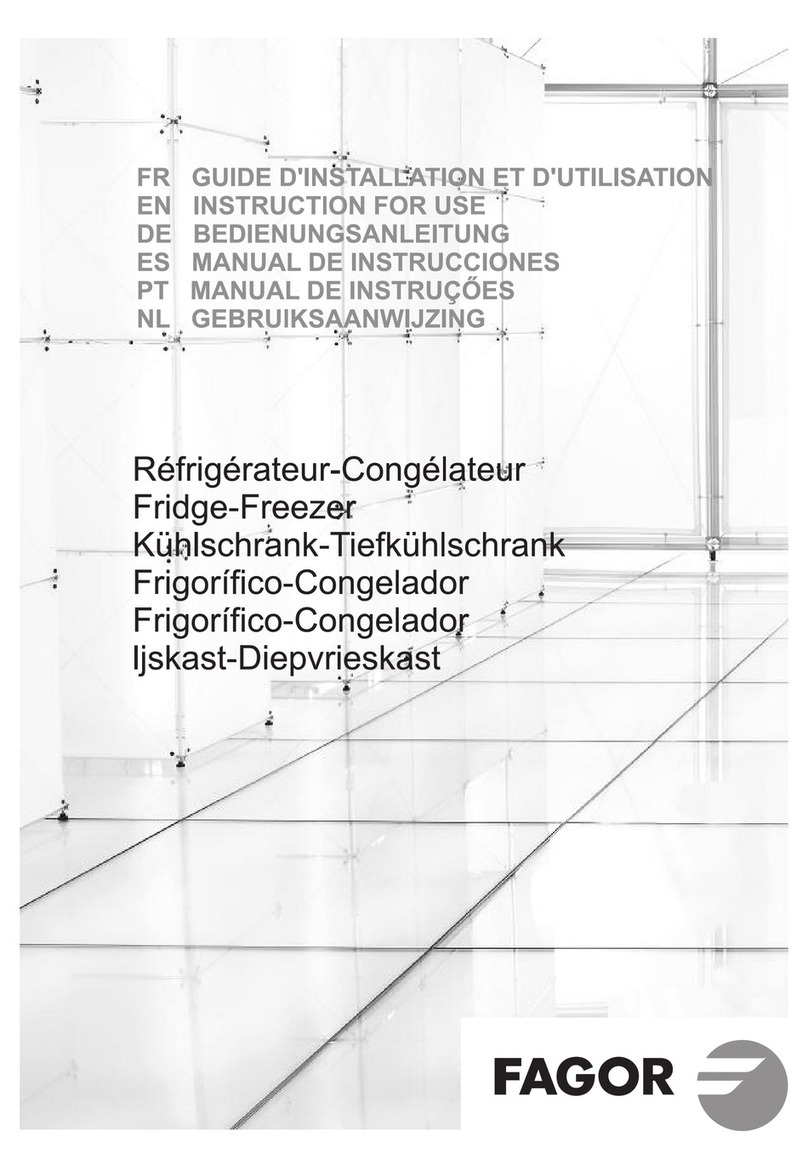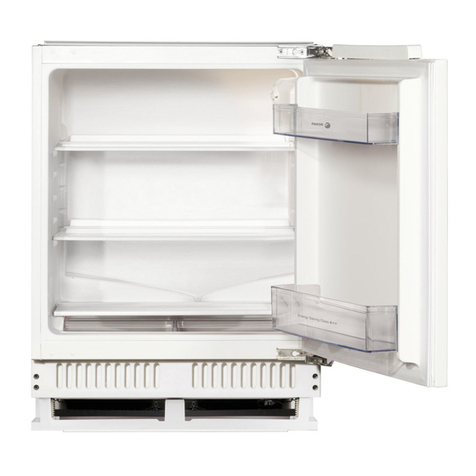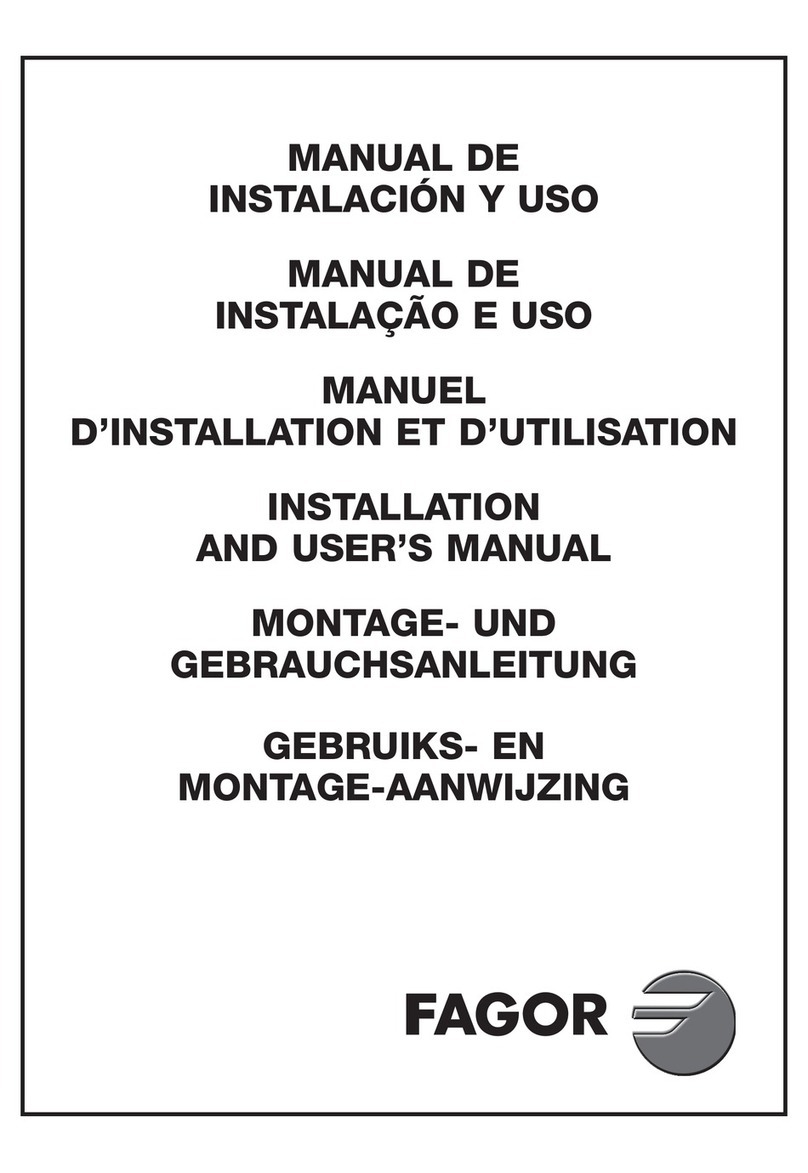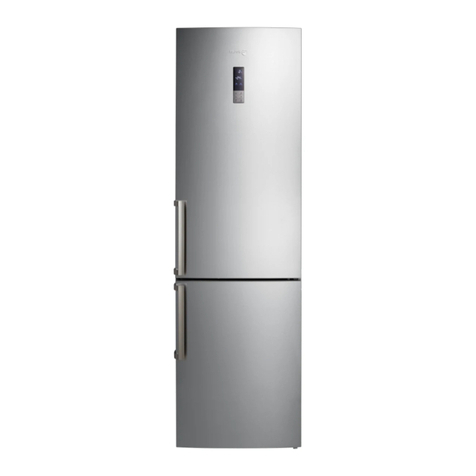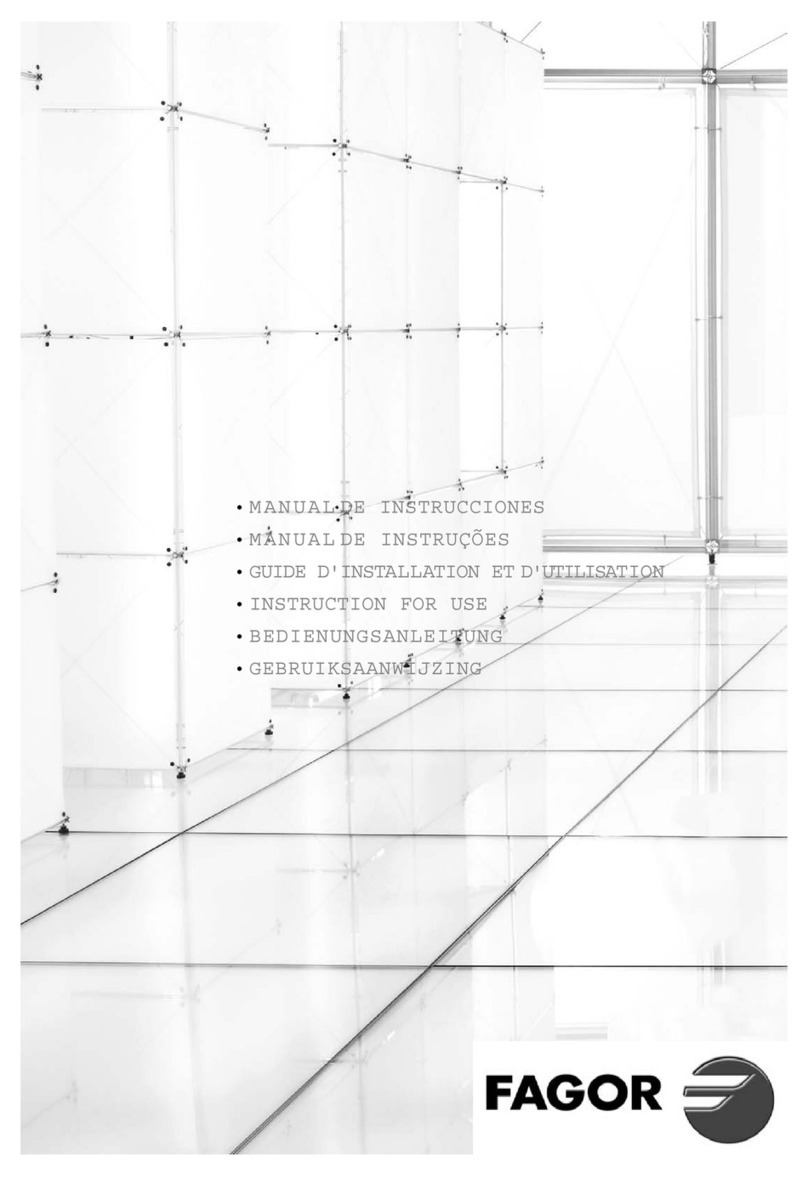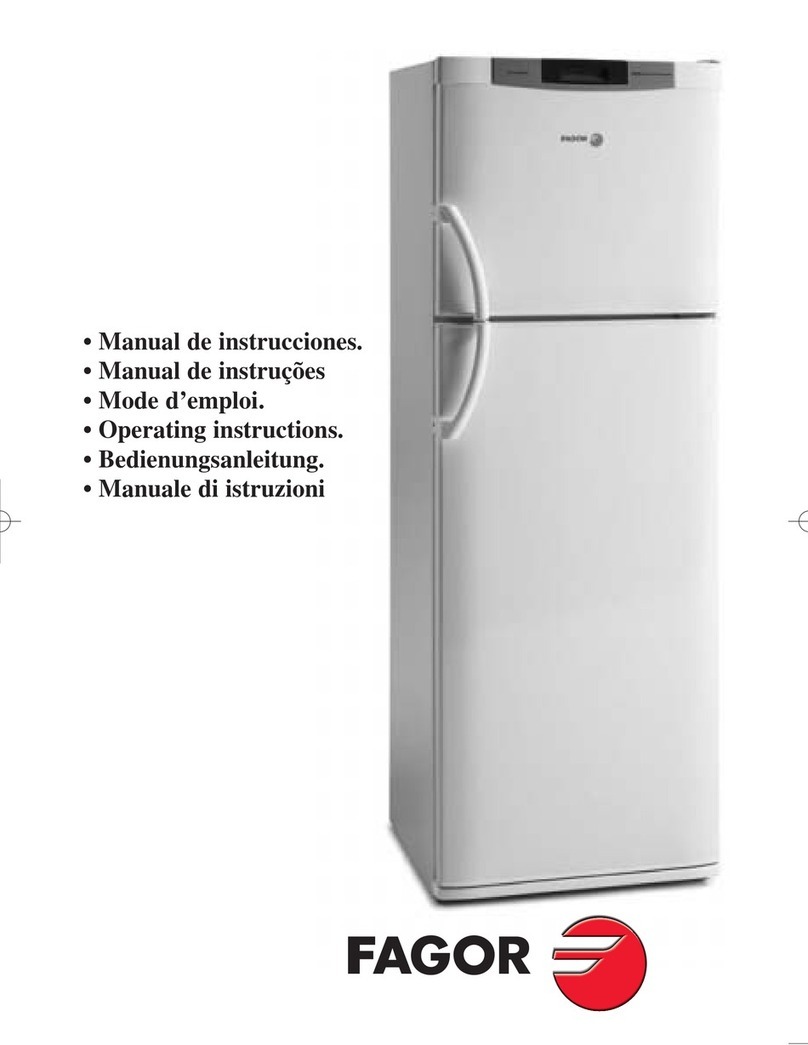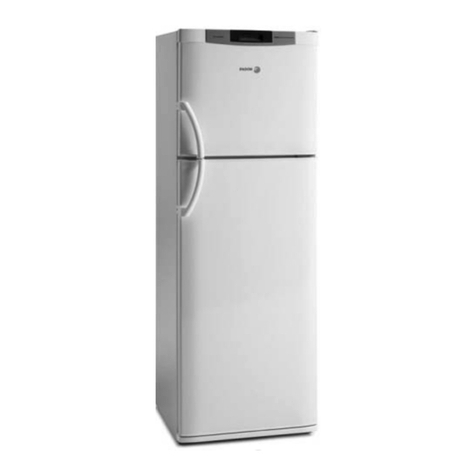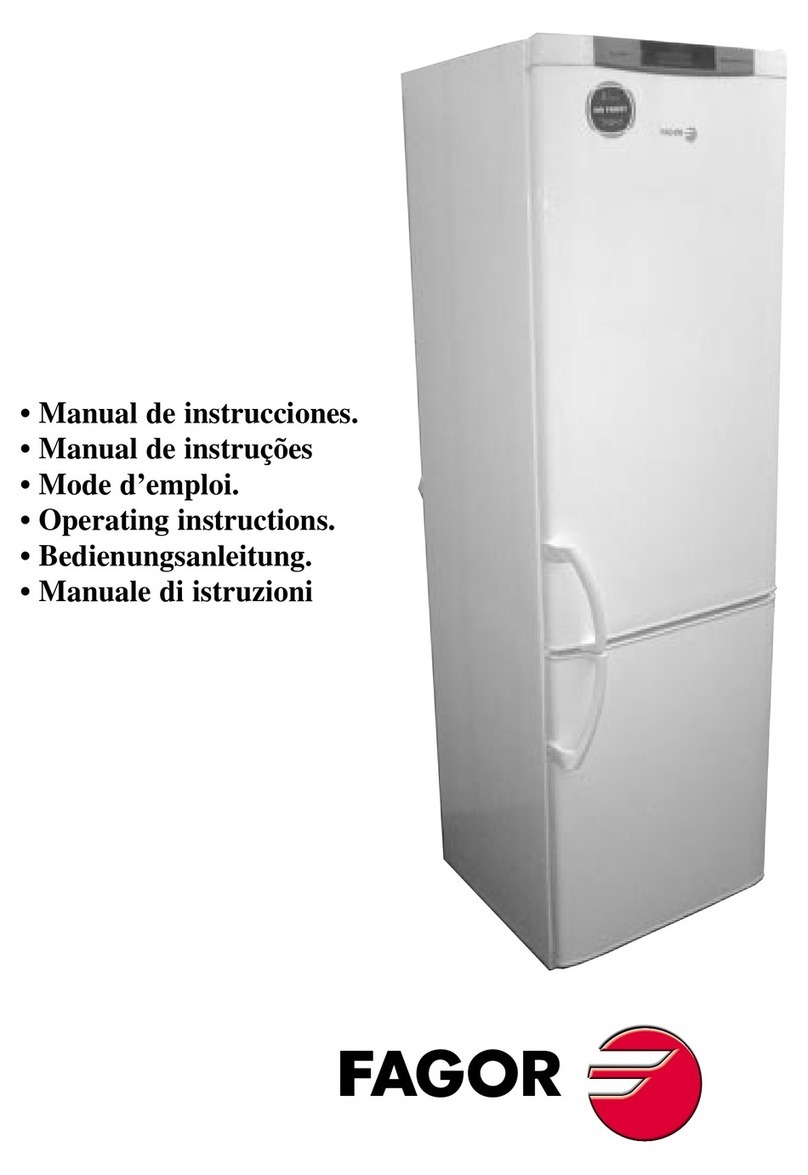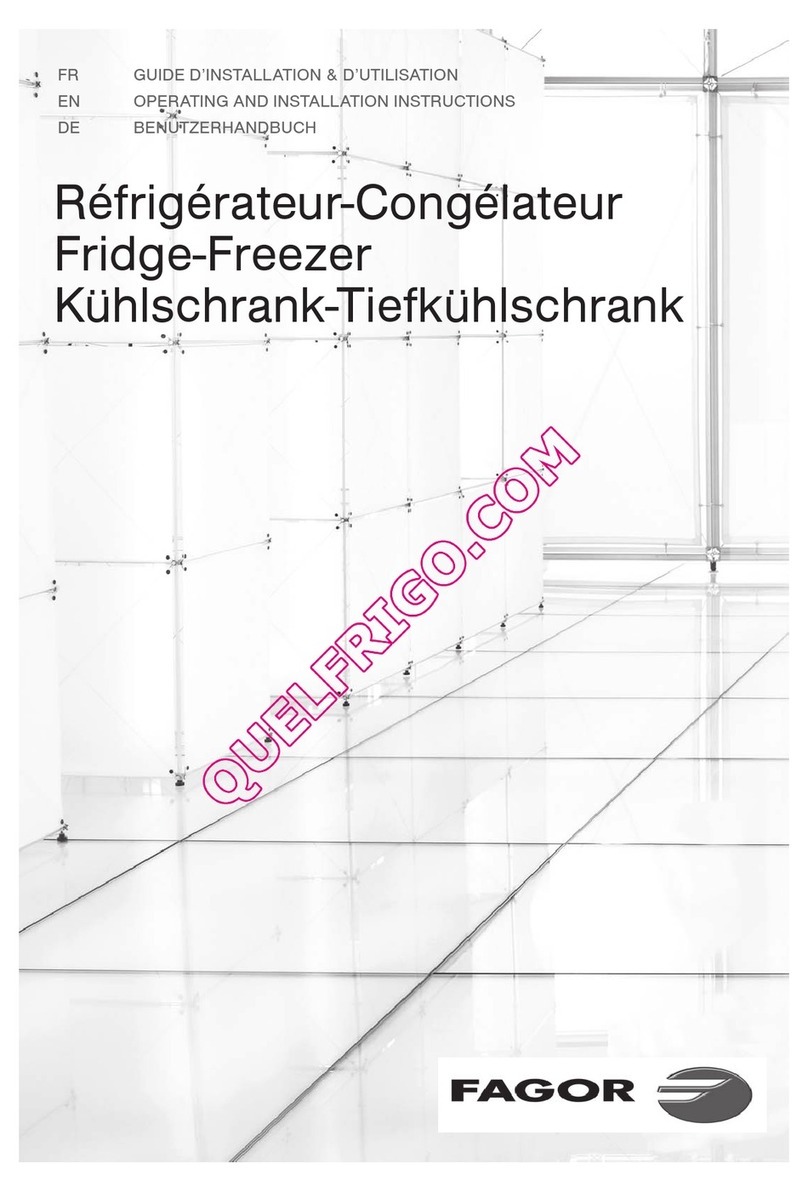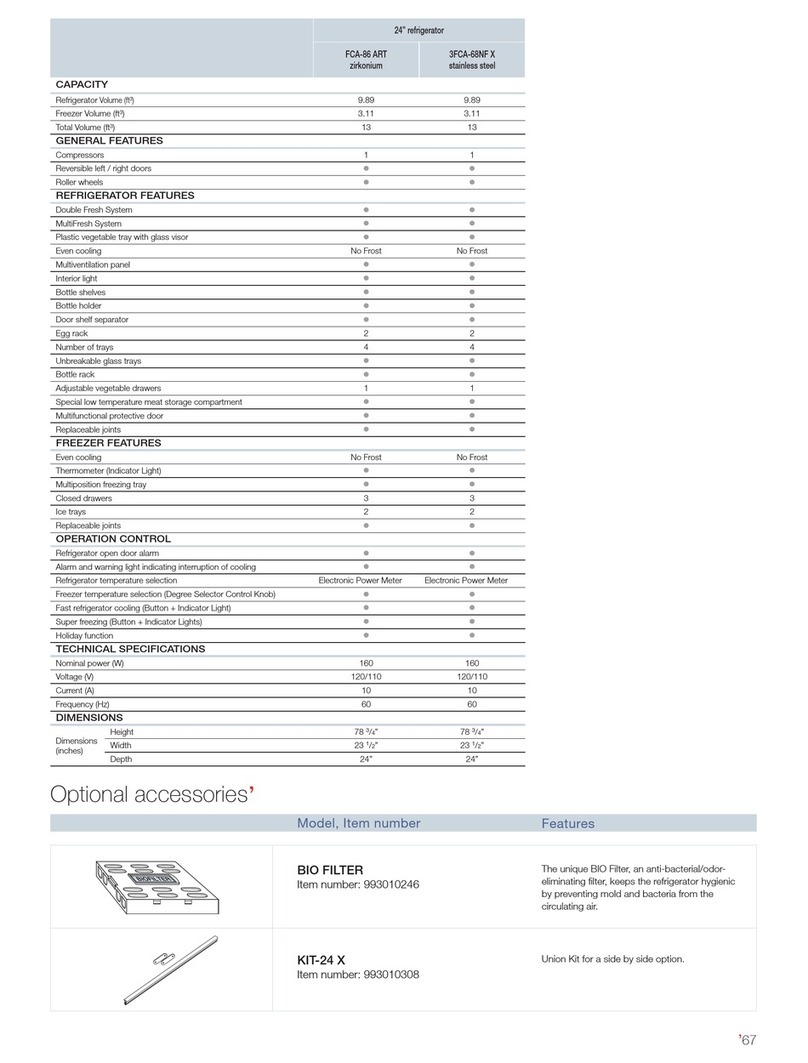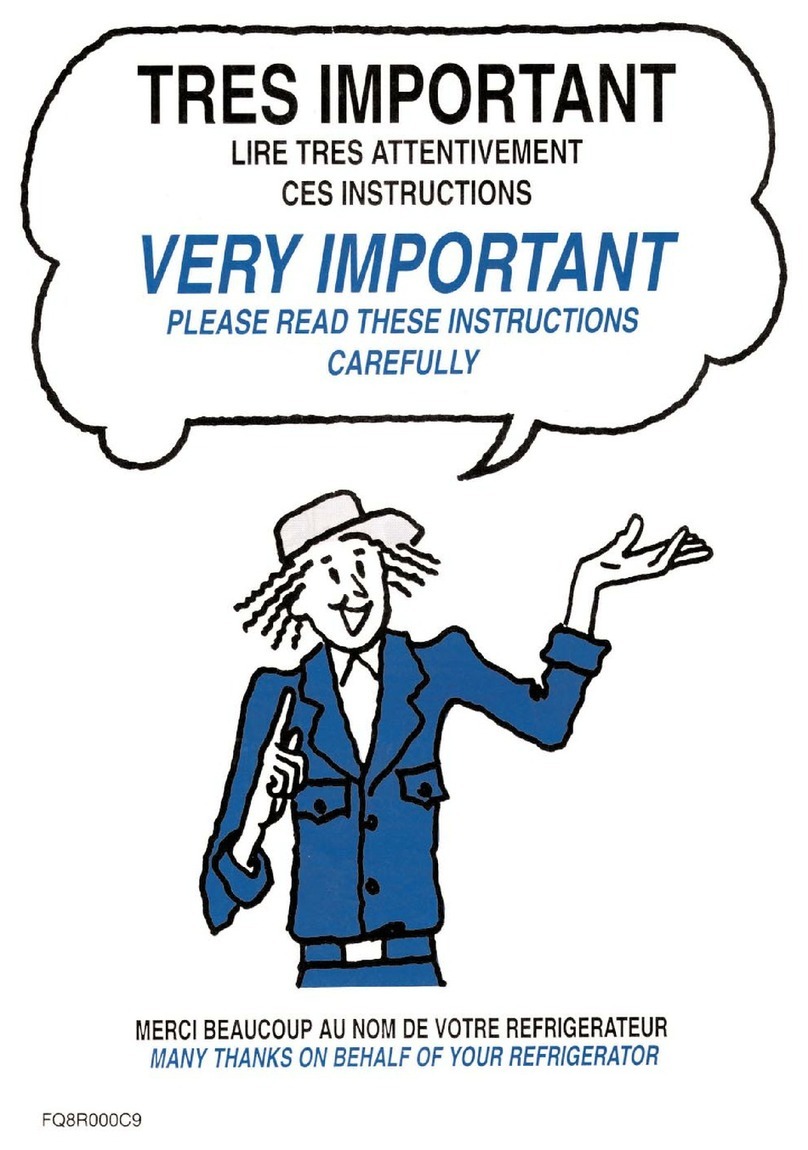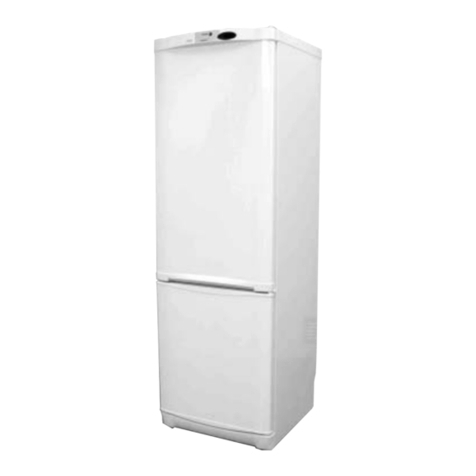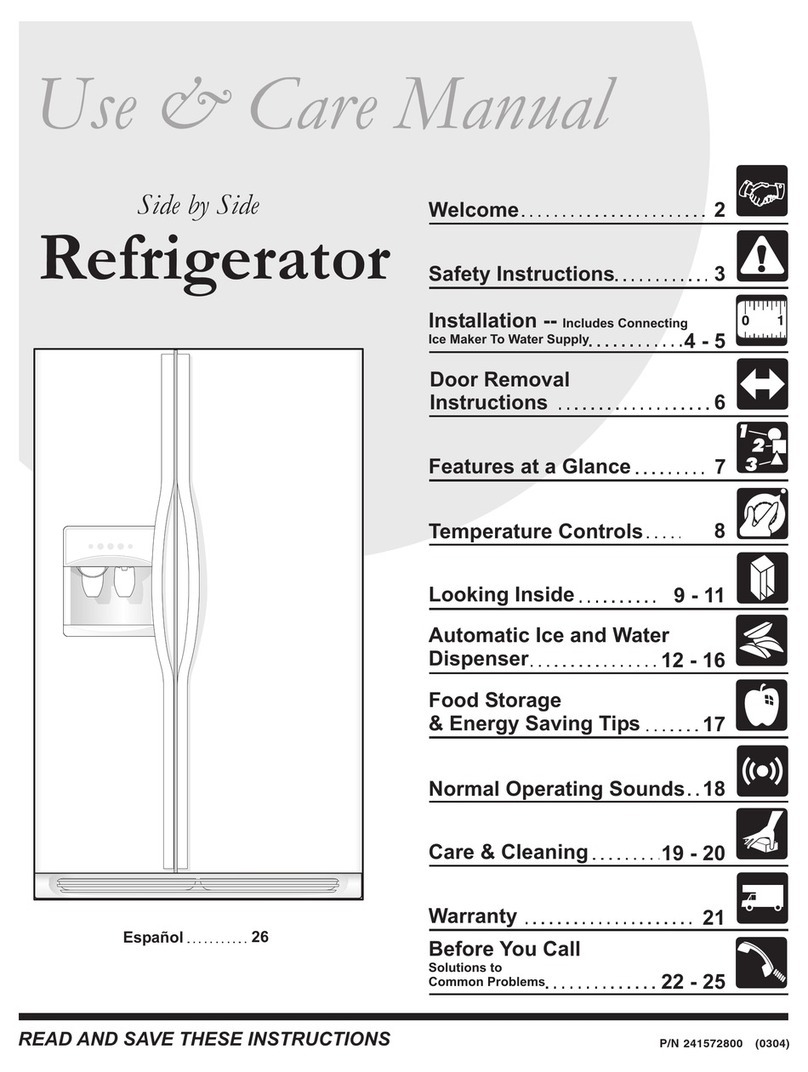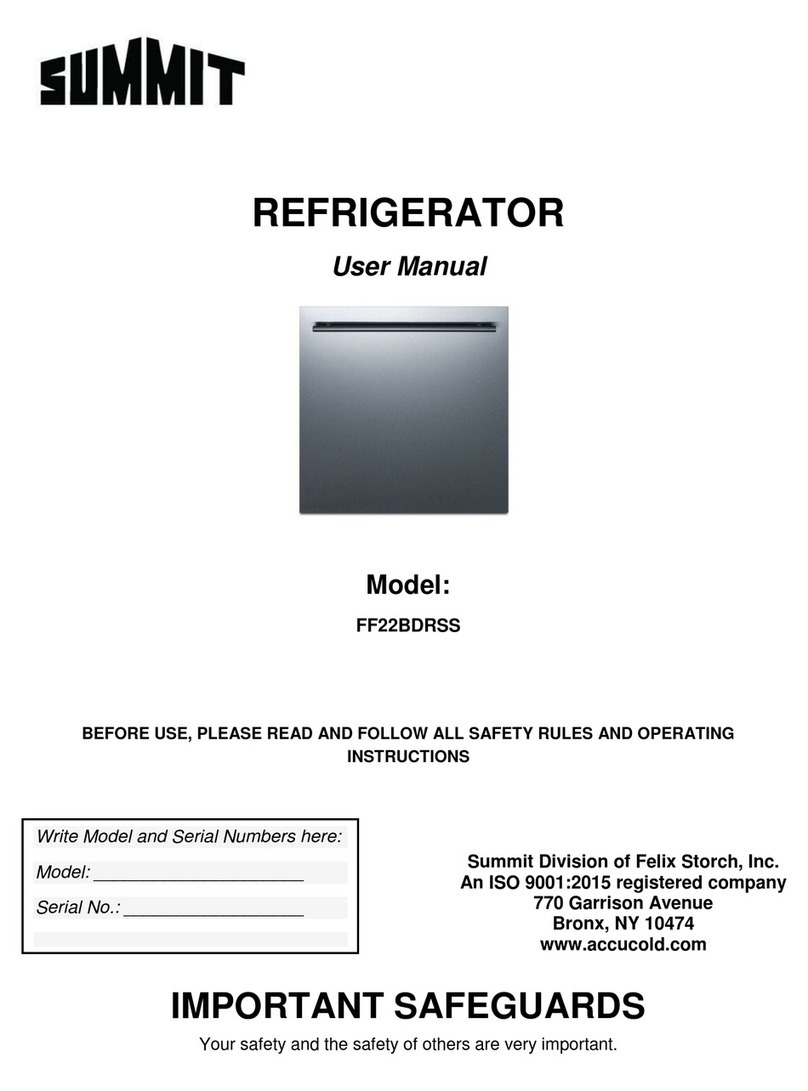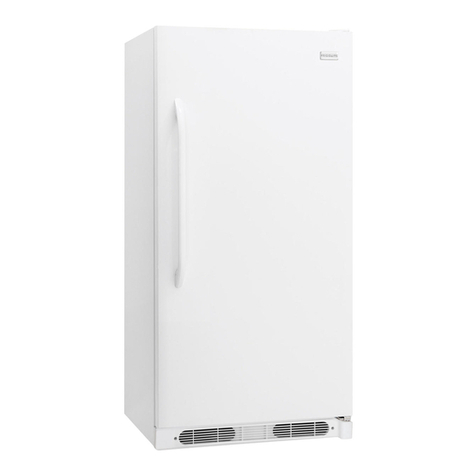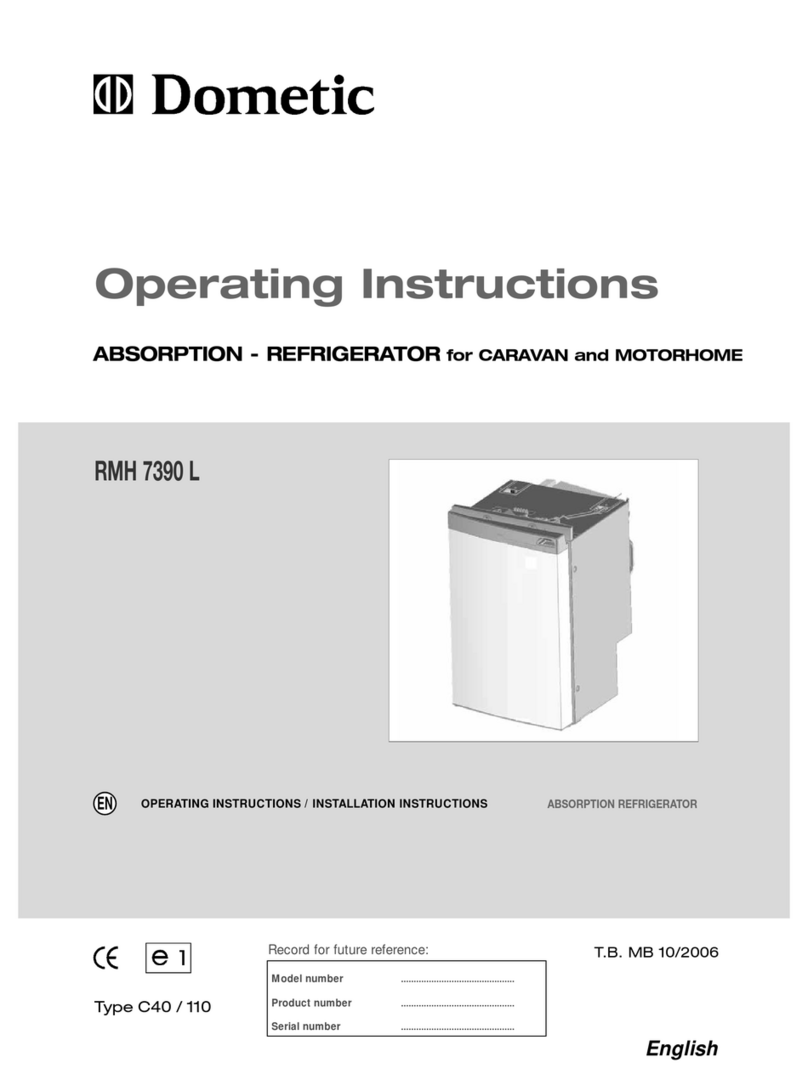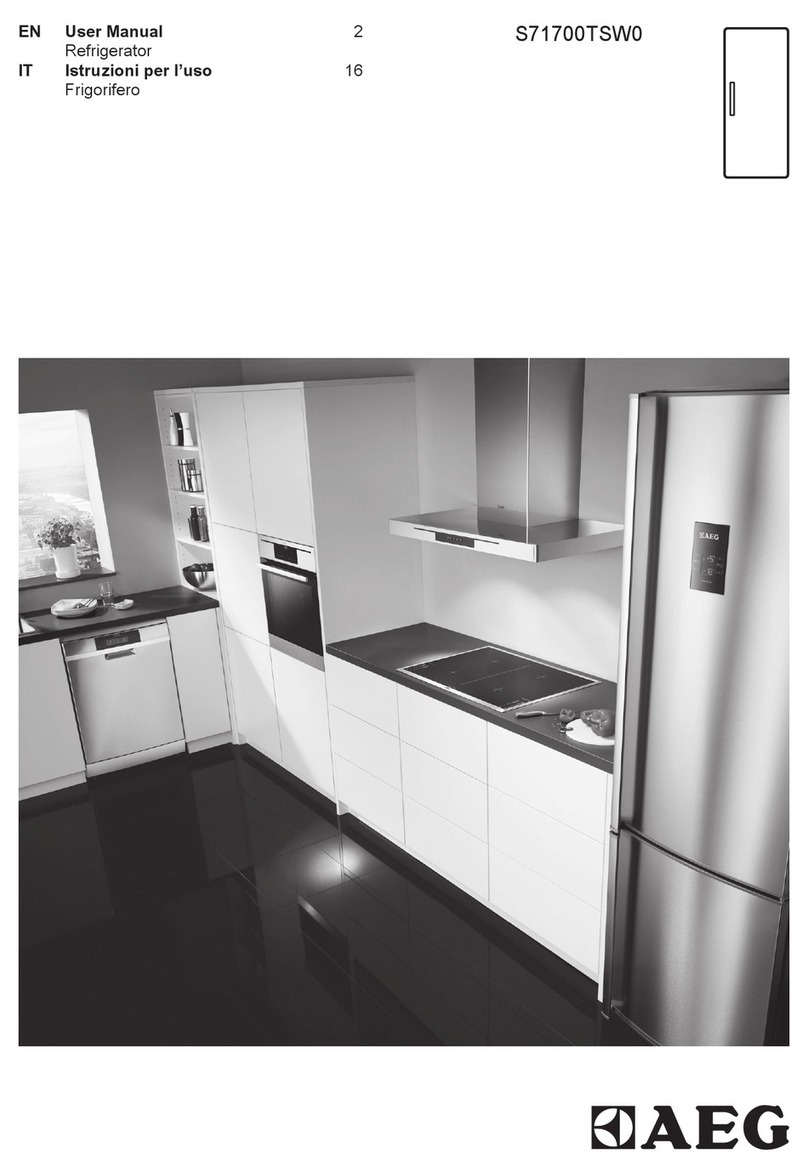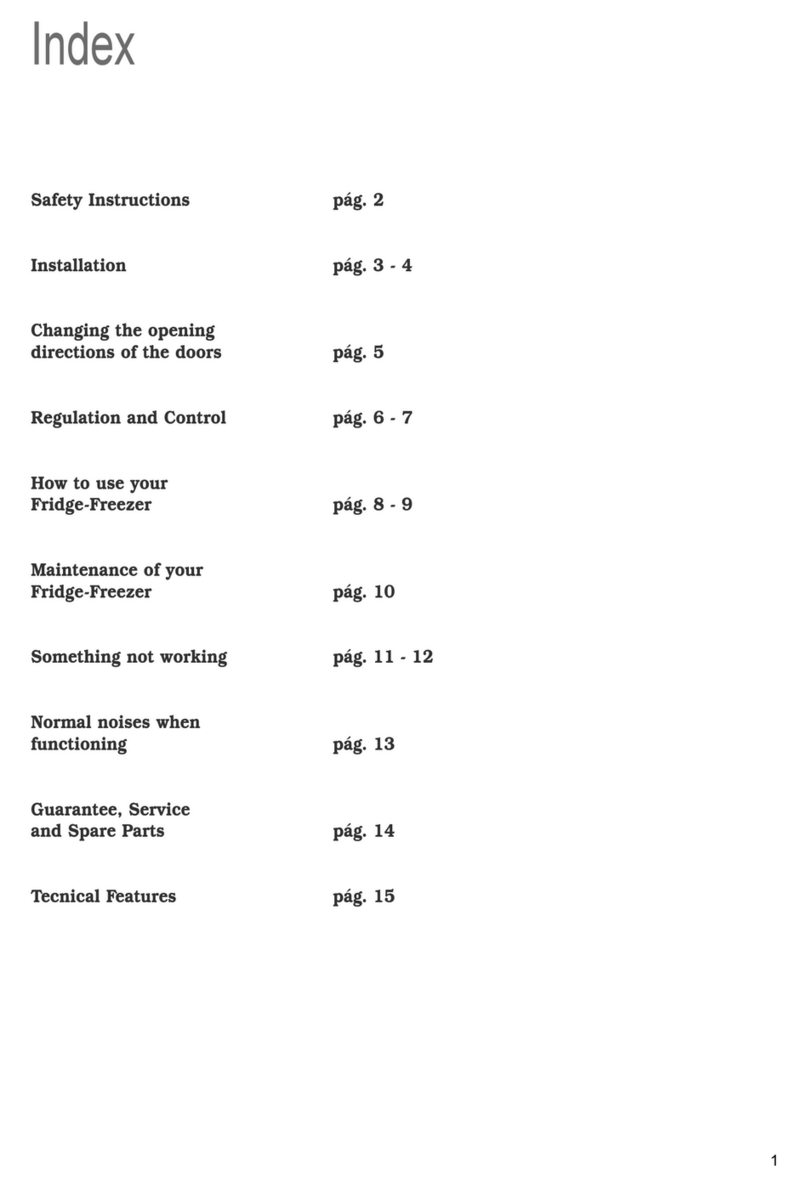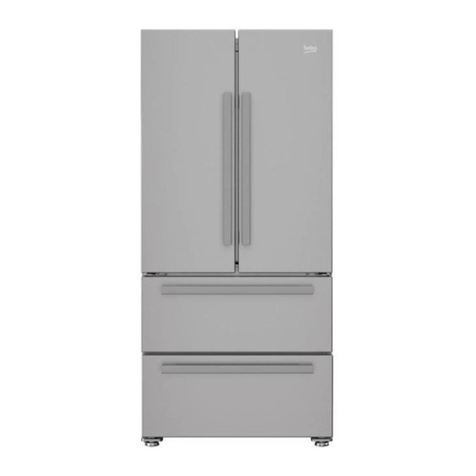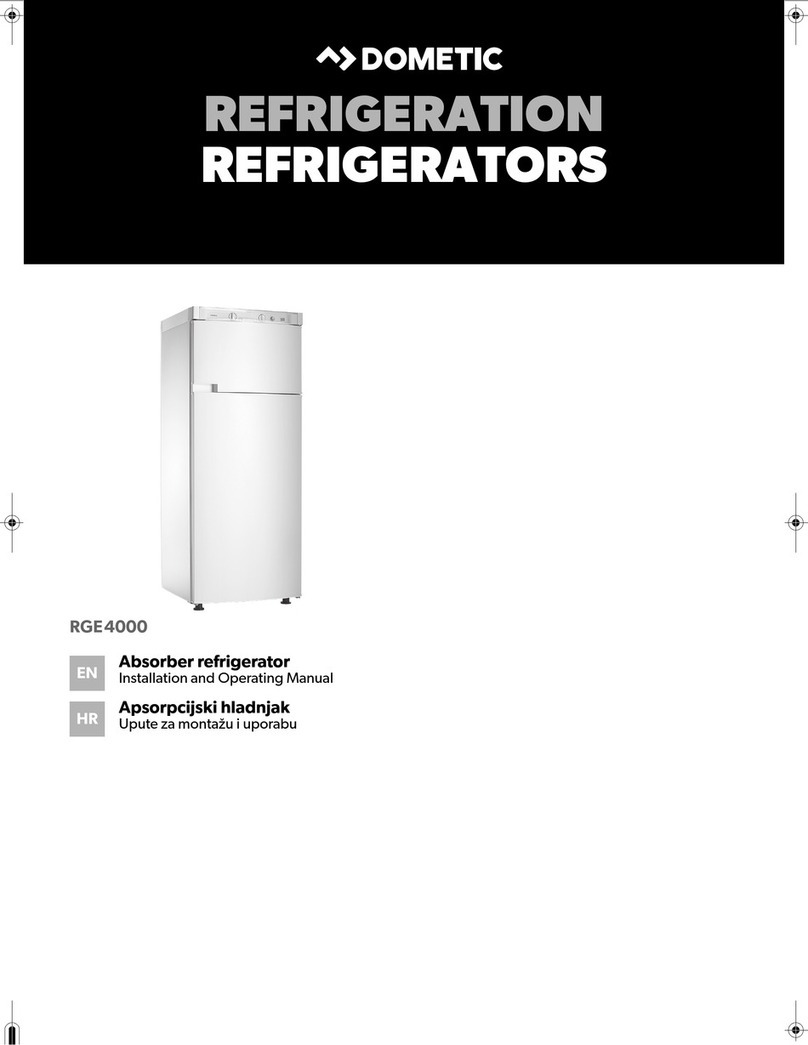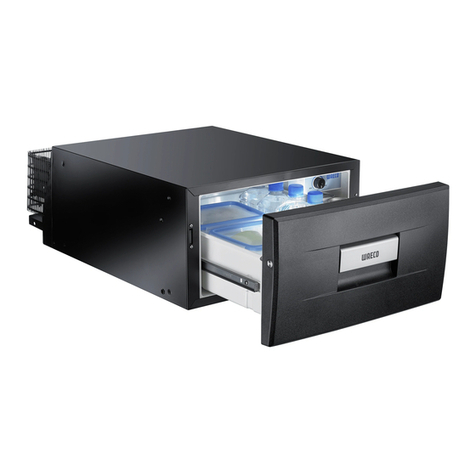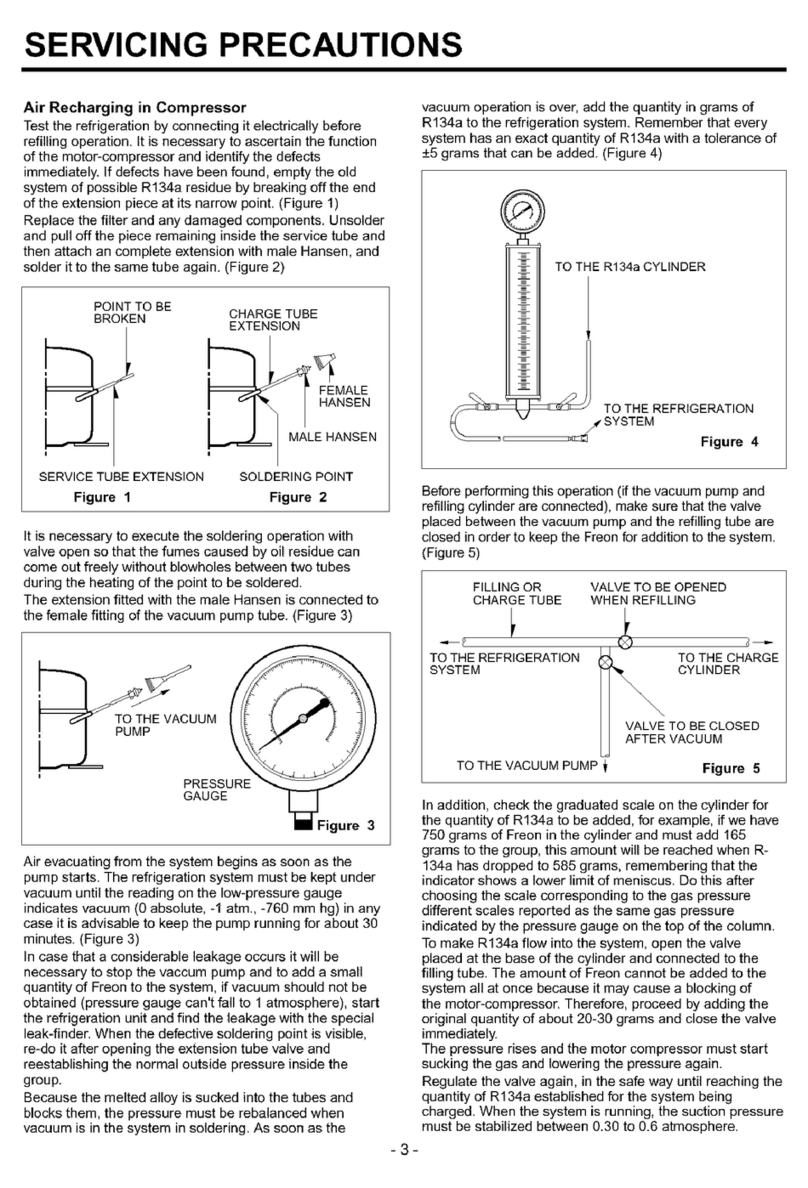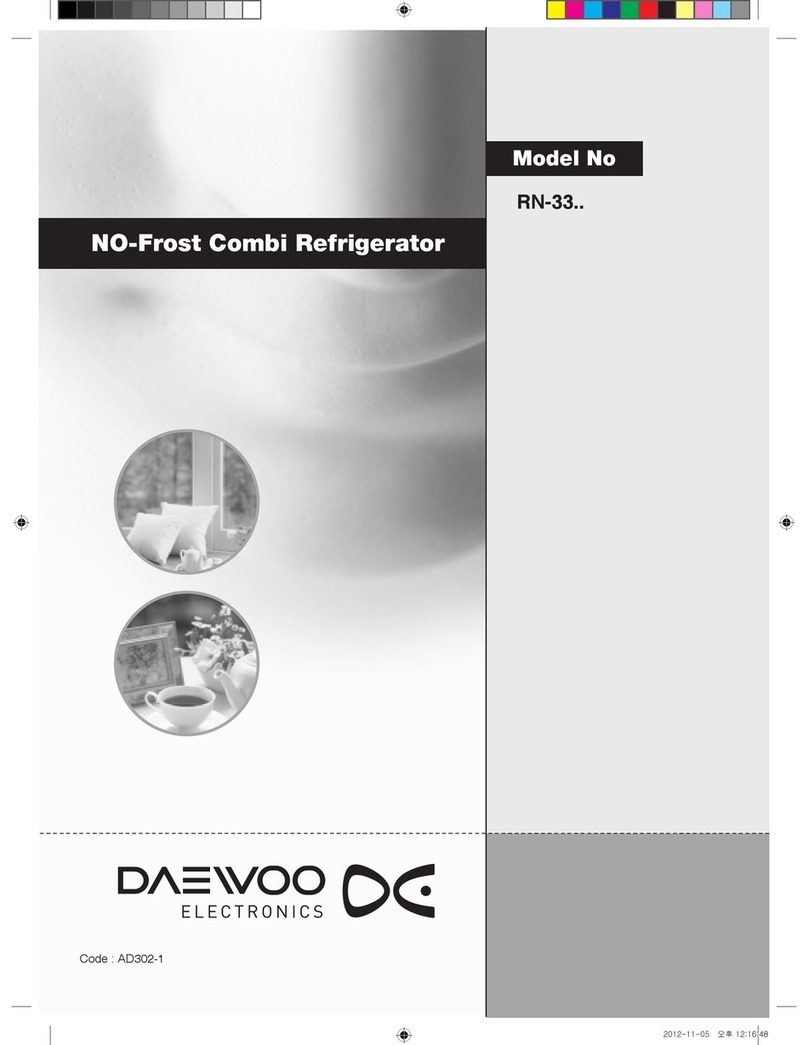MULTIFRESH SYSTEM
If your refrigerator has a Multifresh compartment:
➭This guarantees ideal conservation of fresh food
such as meat, fish, and also vegetables, allowing
these items to be conserved for longer periods of
time without having to freeze them.
➭This area has the coldest temperatures in the
refrigerator and is also the area least affected by
frequent opening.
➭For meat and fish, an intermediate refrigerator temperature is recommended.
➭For greater capacity in the refrigerator, remove the top rack and cover, and store
directly on the tray. This area loses the benefits outlined above.
8
"Holiday Function" ➡➡Used when you want the freezer to work normally and the
refrigerator to be switched off when you do not plan to use it for a long period of
time, for example, during the holiday period. Before enabling this option, empty the
refrigerator, clean it and close the door. Then activate this function to ensure that
your refrigerator is maintained in optimum conditions to avoid generating
unpleasant odors. When you come back from your holidays, simply deactivate the
function and the temperature in the refrigerator will drop once again to pre-selected
level.
To activate or desactivate the holiday function:
LED control panel
Press the holiday function button and close the refrigerator door.
Digital control panel
Press the + or – button used for selecting the refrigerator temperature until the
letter H (Holiday) appears on the refrigerator display.
➭Leave enough space between food items to let air to flow around them.
➭Do not leave the door open longer than necessary.
➭Do not put hot food in the refrigerator.
➭Do not obstruct the ventilation grills.(Fig.4)
➭
To prevent food stored from drying out, we
recommend that you place them in an airtight
container or wrap them in aluminium foil or plastic
food wrap.
CORRECT USE OF THE APPLIANCE:
REFRIGERATOR
Fig. 4 Ventilation grills


